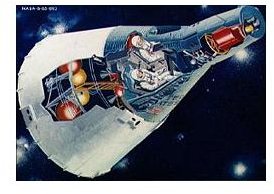Gemini Space Program: Final Development of the Spaceship
Building a Spaceship
The requirements were settled. It was time to build the new craft.
But the new craft was not just a follow on to Mercury. Because it was to test and prove the techniques to rendezvous and dock with another spacecraft, it would have its own propulsion system.
Another mission for it was to be long duration flights, up to two weeks, in anticipation of the lunar trip to follow. For this, the batteries used in Mercury would not suffice. Fuel cells would provide power for this craft.
It was, indeed, to be a true spaceship.
Another difference—gone were the escape tower rockets atop the craft. The Titan II’s hypergolic fuels were not as volatile as the Atlas’ LOX and kerosene. Should there be an explosion on the pad or up to about 50,000 feet, it was possible to escape just the way jet fighter pilots do—with ejection seats. Above that, the craft’s propulsion system could push them away from danger. Fortunately, the ejection seats never had to be put to the test.
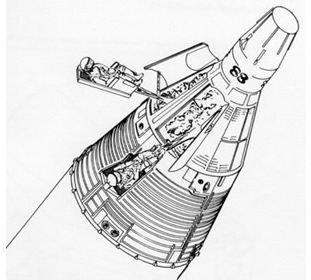
The original plan called for the craft to make a landing on solid ground, not water. But the paraglider designs were not going well. Engineers were having great difficulty getting the flexible wing to deploy. It just flat would not! They continued to work on the problem, but NASA finally decided that at least the initial flights would be with parachutes and on water. As it turned out, the deployment problem was never solved in time for the Rogallo wing to be used on any mission. All missions splashed down in the ocean.
By this time the program was well past the point of being the ‘Mercury follow on.’ It was time to give the project its own name. NASA chose to dub it ‘Gemini’ to note it would carry two astronauts. Gemini, of course, is the name of the twin star system easily discernible in the sky.
The flight plan was laid out. There would be nine manned flights. Six would rendezvous and dock with a target vehicle.
Choosing a target vehicle with which to dock was an easy choice.
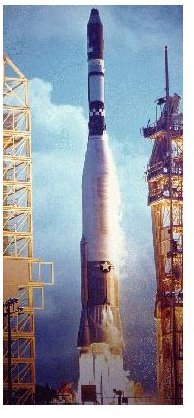
The venerable Atlas booster had by now long been teamed with a new upper stage called Agena. The Atlas Agena had launched the Ranger series of lunar probes, the Mariner series of Mars and Venus probes, and the Lunar Orbiter series that mapped the lunar surface. Agena had a single 15,500 lb thrust gimbaled engine using hypergolic fuels. And it was restartable. This was a critical plus for the program. For Gemini the Agena’s engine would be uprated to 16,000 lbs thrust, and a docking collar would be added so the spacecraft could dock.
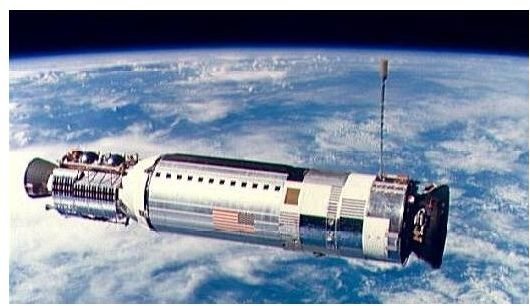
The New Pilots
With the spaceship and its companion ready, it was time to pick the new pilots. Some Mercury astronauts would fly Gemini, but for the most part a new crew would perfect the rendezvous and docking. Some of the chosen few are names you will recognize from more recent history:
- John Young
- Tom Stafford
- Roger Chaffe
- Jim McDivitt
- Ed White
- Jim Lovell
- Cliff Williams
- Charles Conrad
- Neil Armstrong
- Elliot See
- Ed ‘Buzz’ Aldrin
- Alan Bean
- Charles Bassett
- Gene Cernan
- Michael Collins
- David Scott
- Dick Gordon
- Walt Cunningham
- Bill Anders
- Stu Roosa
The new crew were ready. New spacesuits had been designed, because besides rendezvous, a little stroll in space was planned for
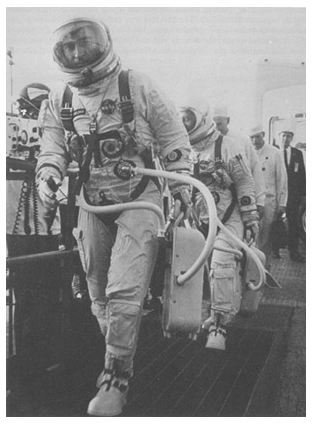
some of them. The hatches would be opened and they would be totally exposed to the harsh environment of outer space. Training proceeded smoothly, and they all learned to slither into the new suits with not too much trouble.
The name of the spacecraft took a slight turn as well. Being the individualists they were, they didn’t see fit to pronounce it like the star system, but instead pronounced it ‘jiminy’ as in Cricket. The pronunciation stuck, and even in mission control, it was ‘jiminy.’
This time the astronauts chose not to name their spaceships–with one exception. Gus Grissom, whose Mercury Liberty Bell 7 had been lost at sea, was picked to fly the first shake down flight with new astronaut, John Young. Grissom, Commander of the craft, had a name in mind. Debbie Reynolds had recently starred in a movie about one of the survivors of the Titanic. It was called “The Unsinkable Molly Brown”.
Grissom dubbed his spaceship ‘Molly Brown’. He was bent on it not sinking.
He and Young are shown in the photo illustrating the spacesuits as they walk to the elevator to board their spaceship.
The Gemini missions, some exciting and terrifying, were about to begin.
Credits
Gemini cutaway: NASA
Gemini ejection seats: NASA
Atlas Agena: NASA
Agena with docking collar: NASA
Gemini spacesuits: NASA
This post is part of the series: Rendezvous in Space–The Gemini Program
With President John Kennedy’s challenge to land a man on the moon by the end of the decade, NASA had to develop and prove the techniques of rendezvous and docking two spacecraft in orbit. That was Gemini’s mission. Along the way, five astronauts would take a stroll in space.
